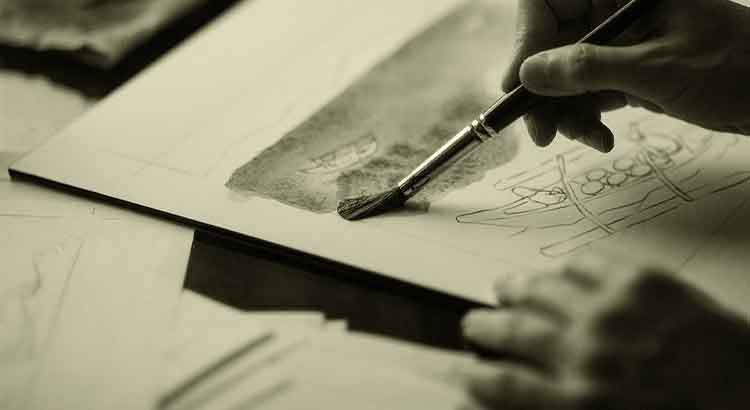The difficult thing in art is to make intelligent use of the spontaneous manifestations that arise during the process, inserting them into the predefined structure without harming the whole. Often, the highest peaks of a work are the result of unexpected flashes of light that the author knew how to take advantage of. The whole, it is true, lacks order; and order is not made from a spark that suddenly springs up in the spirit. But the artist, if surprised by the adventitious idea, will do very well to transfer this surprise effect to his work. Art will win.
Tag: writing
A Continuous Exercise of Patience
Poetry, this terribly difficult art, is a continuous exercise of patience. In poetry, haste is always the error. It is a real upheaval to know that, on the one hand, one must take advantage of spontaneous manifestations, which spring up in bursts and give great power to the verses; but, on the other hand, one must let the verses cool down, solidify, and then grind them calmly, adjusting the rhythm, changing words, refining expression. The stab wound of noticing a blemish caused by hastiness is extremely painful. A whole exhausting work, therefore, is spoiled when it is no longer possible to repair it. From it, to the artist, only failure, only frustration will remain. That is why poetic work is an exercise in self-control, in patience, where the poet must also act as a strategist, releasing and containing his impulses, suspecting himself even when he will conclude that he should not do it. And, still, it will not be enough…
Every Artist Has Inclinations and Deficiencies
Every artist has inclinations and deficiencies. There are themes that, by an innate disposition, come out naturally and brilliantly; others, however, present difficulties. Therefore, first of all, it is important that the artist is able to identify and classify them. Then, it is necessary to work to develop his weaknesses, and this is done by exercising the representation of what is opposite, exploring forms, taking risks. In art, of course, there are choices; but there are also weaknesses, and these, if not taken on board, in their own way, will always manage to become entrenched as obvious defects. Thus, will be complete the artist who, through effort, converts into strength that which is not natural to him.
The Bon-Vivant Artist
Says Burckhardt, in my English translation:
Indeed, without this degree of force of character, the man of the most brilliant “talent” is either a fool or a knave. All great masters have, first and foremost, learned, and never ceased to learn, and to learn requires very great resolution when a man has once reached heights of greatness and can create easily and brilliantly. Further, every later stage is achieved only by a terrible struggle with the fresh tasks they set themselves.
“Force of character”, “never ceased to learn”, “terrible struggle”… here is a sensible view of the state of mind that produces great works. It is really a joke this romanticized view of the bon-vivant artist, so widespread these days. According to it, the exercise of art is a pleasure, a diversion for idle moments. An artist of this sort is, if anything, mediocre. Faced with the posture of a serious artist, even the much-talked “search for beauty” seems outrageously futile. All this idealization of the artist and art does not seem to define very well the real motivation of the one who devotes a huge effort, who shapes his entire existence around his own occupation, never relaxing, never satisfied, contrary to what is convenient for him. Burckhardt, like a few, gives us a prudent vision of what true greatness represents.



